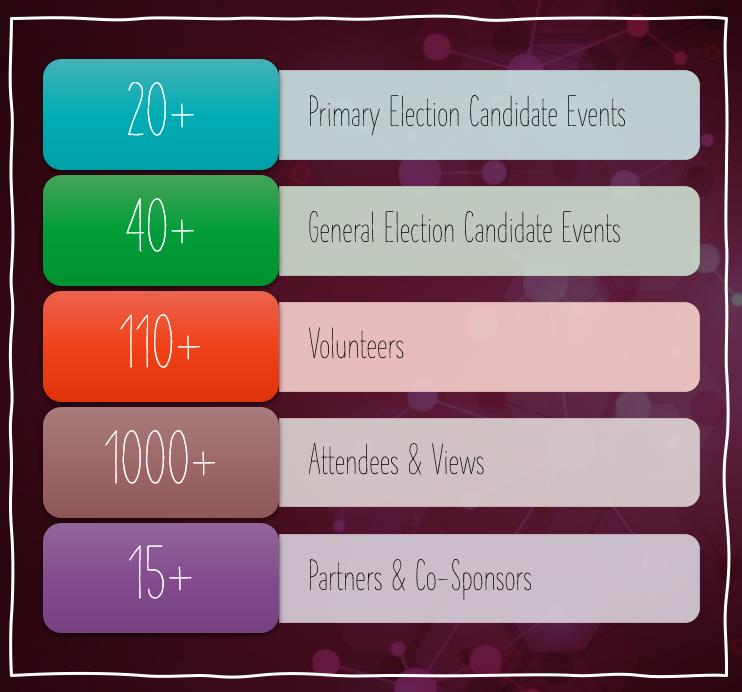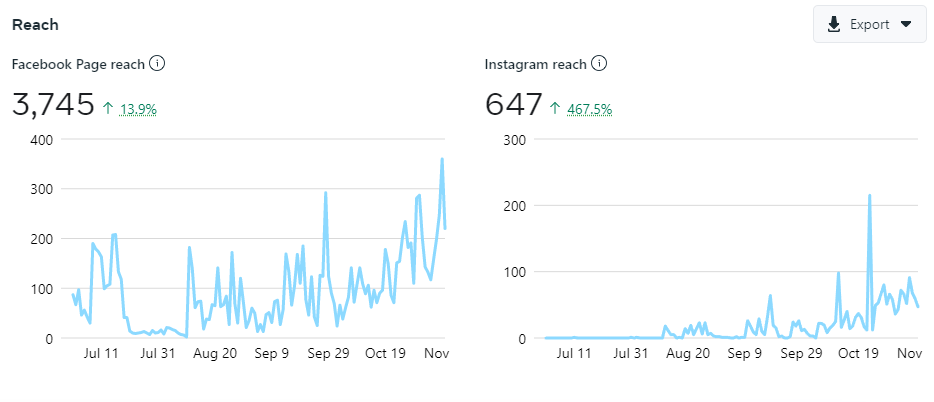by Liz Bander, LWVWA Director
Did you see the 2022 Election Impact Report from LWVUS? Around the country, we did amazing work empowering voters and defending democracy, including here in Washington. While this report looks fantastic, it's built on a strong data-driven culture. While it can feel awkward to ask for data, or even to consider it, we don't know what we don't measure, and most importantly, we can't assess our impact without measurement.
This year, we experimented by adding in more data collection at various points to understand the work we're doing across the state, to understand who we are reaching, and to see if what we're doing is making an impact.
What did we do during Election Season?

Shelley Kneip, LWVWA Voter Services Director, detailed some of the incredible and creative voter services work Leagues across the state did during Election Season. We also sent a survey to local League presidents, asking them to respond with some numbers, so that we could assess our reach. Seven Leagues responded, for a 33% response rate, which is not bad for a first attempt!
Between the survey and events shared to the LWVWA calendar, we found that across the state we had a big impact-- and because we are missing data, our impact is likely even larger:
- 20+ Primary Election Candidate Events
- 40+ General Election Candidate Events
- 110+ Volunteers
- 1000+ Attendees & Views
- 15+ Partners & Co-Sponsors
it's very normal to not have all the data, and while we should want to collect what we can, there are reasons why we don't have it all. Some of our data is owned by our partners- for example, while we can see the number of views on a partner organization's YouTube channel when it's publicly visible, we can't see anything further. That's okay. As we discuss what we want to do in the next election cycle, we can look at if and how we want to work with partners to collect additional data, as well as decide what we want to collect internally.
What were voters thinking about?
We were contacted many times by the press during this election cycle and one of the common questions was, "what's on voters' minds?" While we don't have our own polling information, we received some insights from folks who submitted questions to us for the WA Secretary of State and US Senate candidate debates at Gonzaga.

The word cloud above is imperfect-- you can see that words like "support" and "Secretary of State" are large, but that's because a number of questions were entered in the form of, "As Secretary of State, would you support..." However, you can also see a number of items that mattered to voters. The submitted questions were shared with the Voter Services team to inform the actual questions asked during the debates separate from any demographic data voluntarily submitted.
Who did we hear from?
We also asked demographic questions for individuals. This was to understand if we were reaching a broad segment of the population. We could have done better, and one of my insights for next time is that the outreach should start earlier, and especially by engaging partners immediately. Overall, we received 49 responses, some of which may have been submitted by the same person. All questions were optional and could be skipped entirely. Here are some of the results and a few key insights.
 Result: Questions came from people in nine counties, with the majority coming from Spokane, followed by King and Kitsap.
Result: Questions came from people in nine counties, with the majority coming from Spokane, followed by King and Kitsap.
Insight: We have Leagues in far more counties than those that responded. How can we ask Leagues and League members to participate more?

Result: The vast majority of respondents were over the age of 50, white, and women.
Insight: This makes sense, given our overall membership demographics, but we should review how we publicize question solicitation for future candidate events.

Result: Most folks heard about the debates via email, but a number heard via the newspaper.
Insight: Media partners really help out here. Also, we know what's a good way to reach this demographic!
Did we make an impact?
I reviewed the data as it was coming in, and with the knowledge that we weren't seeing much movement on social media, worked with Amy Peloff and Carolyn Stewart to change our outreach strategy, particularly with Instagram and Facebook. We made two changes to how we use the platforms and one change to the content we shared.
First, we started using Instagram and Facebook Reels. Reels are short videos, and lately, Instagram and Facebook have been prioritizing them, which means people can more readily find our content. We made reels about candidate events, election information, and more. We'll continue to use them when we want to share video, though we will still share longer videos periodically. We also used Stories, including Story Highlights, to promote information. Using stories allows us to embed links, add emojis, and easily share content from other Leagues.
Finally, the fun part: if you were watching our social media, you may have seen Carolyn meme-ing our way to voters. From reminders about voting deadlines to encouraging people to participate, we reached a number of folks, beyond our usual scope. Our top performers were the Zoolander meme below and a reel commiserating with our followers about elections ads.
But did this work? In short, yes! We dramatically grew our reach, and overall, have increased our followers by 15%. And while we can still grow, refine processes, and build capacity, we know that we're connecting with folks across the state by having a good time with very serious work.

